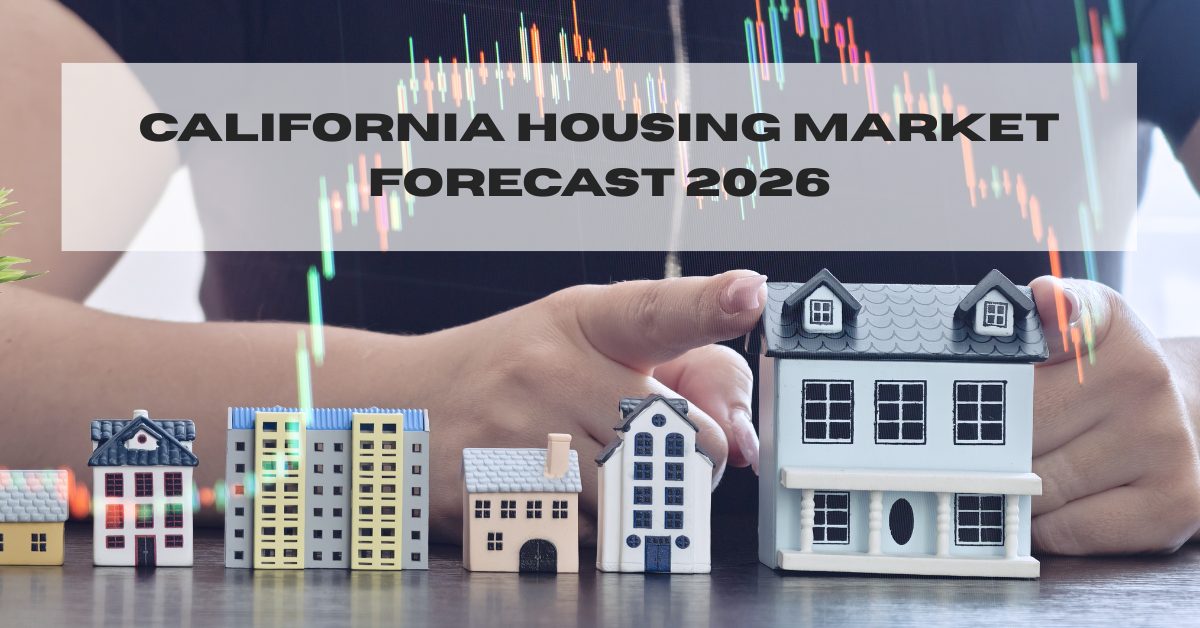
The California housing market is shifting—after some years of strong growth, things may look a little different in 2026. Here’s what the experts are saying, what that means for buyers and sellers, and how to prepare.
Key Forecasts & Trends for 2026
Here are the major predictions for California’s housing market in the coming year:
| Metric | Forecast / Trend | Context & Implications |
|---|---|---|
| Median Home Price | Up about 3.6 % to ~$905,000 in 2026 California Association of Realtors+1 | Growth will be moderate, not explosive. |
| Home Sales | Increase slightly by ~2% to ~274,400 units California Association of Realtors+1 | The market may regain a bit of momentum after a flat 2025. |
| Affordability | A modest improvement—about 18% of households may afford a median-priced home California Association of Realtors+2PR Newswire+2 | Still tight, but marginally better conditions. |
| Mortgage Rates | Expected to decline from mid-6s to around 6.0 % for 30-year fixed in 2026 California Association of Realtors+2PR Newswire+2 | Slight relief for buyers—but still high compared to historical lows. |
| Supply & Inventory | Active listings may rise ~10%; supply returns toward pre-pandemic levels California Association of Realtors+2PR Newswire+2 | More options for buyers, easing some of the pressure. |
These projections are based largely on the California Association of Realtors (C.A.R.) forecast.
What’s Driving These Trends?
Understanding the “why” behind the numbers helps you anticipate risks and opportunities.
-
Moderating demand: After a period of very high competition, some buyers are pausing or delaying due to affordability constraints.
-
Improving supply: More homes coming on the market will ease scarcity, giving buyers a bit more choice.
-
Rate reprieve: As inflation cools and the overall economy stabilizes, mortgage rates may ease, giving some breathing room to buyers.
-
Economic headwinds: California is not immune to general issues like trade tensions, insurance cost increases, or stock market volatility. California Association of Realtors+1
What This Means for Buyers & Sellers
Buyers
-
More leverage — With more listings and less frantic competition, buyers may have more bargaining power in some markets.
-
Still expensive — Even with modest inflation in prices, high mortgage rates and a still tight supply will continue to strain affordability.
-
Best time to get ready — If you’ve been waiting, now is a good time to get your finances in order, get pre-approved, and monitor new listings.
Sellers
-
Stay realistic — Don’t expect double-digit gains; price expectations will need to be more grounded.
-
Stand out — Good staging, flexible terms, and responsive pricing will matter more than ever.
-
Time matters — In a slightly more balanced market, homes that linger may lose visibility or momentum.
Risks & Things to Watch
-
Interest rate spikes: If inflation reaccelerates, rates could climb again and push buyers out of the market.
-
Regional variance: California is huge and diverse—some markets (coastal, luxury, etc.) may see slower movements or even mild declines.
-
Insurance cost & regulation: Rising home insurance costs or new state rules could add expenses for homeowners.
-
Economic shocks: Unforeseen events (policy shifts, natural disasters, national recessions) can derail forecasts.
Bottom Line: A Market in Slow Motion (Not Free Fall)
2026 won’t be a blockbuster year for real estate, but it’s unlikely to crash either. What we’re seeing is a transition: from hyper-growth and scarcity to a more measured, stable market. For many buyers and sellers, that’s a welcome shift.
If you’re thinking of buying or selling in California in 2026, now is the time to:
-
Line up your financing
-
Get clear on your goals and price range
-
Work with a local agent who understands your sub-market
-
Keep a close eye on economic data & mortgage trends


 Facebook
Facebook
 X
X
 Pinterest
Pinterest
 Copy Link
Copy Link

